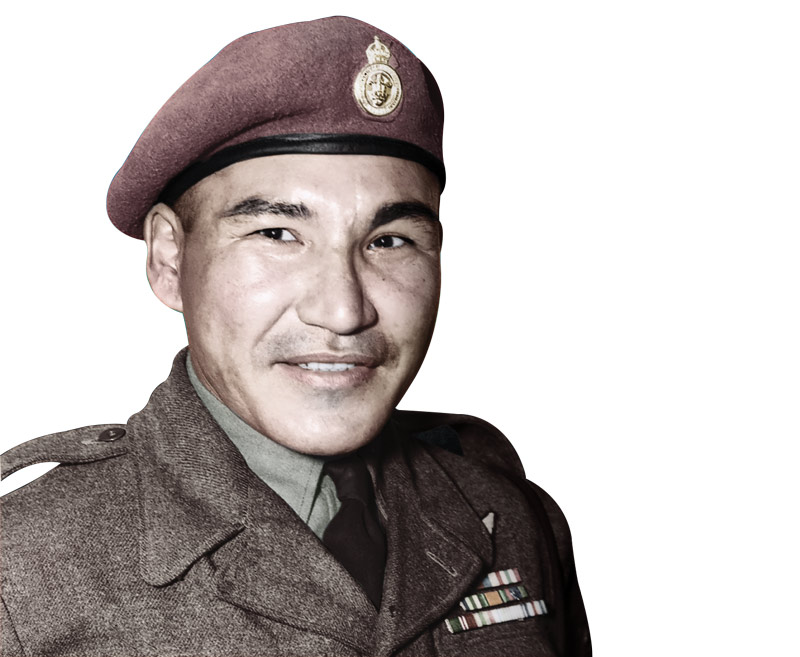
In 1968, Hollywood made a movie about the Devil’s Brigade, the name German soldiers gave to the elite Canada-U.S. First Special Service Force. Tommy Prince was part of that legendary unit, portrayed in the film as “Chief.” Born in a tent in Petersfield, in Manitoba’s Interlake region, Prince was from the Brokenhead Ojibway Nation and became one of Canada’s most decorated war heroes.
“All my life I had wanted to do something to help my people recover their good name.”
Prince learned to trap and hunt from his father, and he put those skills to good use during the war. In 1944, he ran a communications line to an abandoned farmhouse that was 200 metres from a German artillery position. He used his position to report on enemy movements until the line was severed during shelling. By that point, the Germans had advanced to the farmhouse. Prince disguised himself as a local farmer and walked out among the German soldiers. Bending down and pretending to tie his shoes, he repaired the wire right under their noses.
Prince’s exploits during the war resulted in the destruction of German tanks and the capture of more than 1,000 German prisoners. After the war, he was received in Buckingham Palace by King George VI, who presented him with the Military Medal. He also received the U.S. Silver Star Medal (one of only 59 Canadians to receive it) and several other decorations.
After the war, Prince returned to Canada, where as an Indigenous man, he still wasn’t allowed to vote in federal elections and, despite his service, didn’t receive the same benefits as other veterans. He lobbied the federal government to abolish the Indian Act and became an advocate for Indigenous rights. “All my life I had wanted to do something to help my people recover their good name,” he said. “I wanted to show they were as good as any white man.”
Prince returned to the army to fight in the Korean War, and he was part of the first Canadian unit to land there. His role was similar to the one he had in the Second World War, leading small groups into enemy territory, launching attacks, then retreating. He did two tours in Korea before being wounded, once again distinguishing himself and once again was decorated for his actions. In all, he received 11 medals in the two wars.
His heroism continued once he got home when he saved a man from drowning in Winnipeg. But the home front proved to be more challenging than the front lines. The battles he couldn’t win were against racism and the restoration of Indigenous rights. He spent the last years of his life living in a Winnipeg Salvation Army shelter and died on Nov. 25, 1977, at the age of 62.
In death, he was once more the decorated war veteran. Members of the Princess Patricia’s Canadian Light Infantry served as his pallbearers and more than 500 people attended his funeral, including Manitoba’s Lieutenant Governor Francis Laurence (Bud) Jobin, and consuls from the U.S., France and Italy. A symbol of courage, he was embraced once more.
Advertisement





















